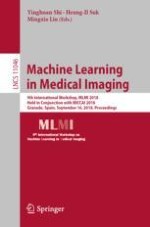2018 | OriginalPaper | Buchkapitel
Self-taught Learning with Residual Sparse Autoencoders for HEp-2 Cell Staining Pattern Recognition
verfasst von : Xian-Hua Han, JiandDe Sun, Lanfen Lin, Yen-Wei Chen
Erschienen in: Machine Learning in Medical Imaging
Aktivieren Sie unsere intelligente Suche, um passende Fachinhalte oder Patente zu finden.
Wählen Sie Textabschnitte aus um mit Künstlicher Intelligenz passenden Patente zu finden. powered by
Markieren Sie Textabschnitte, um KI-gestützt weitere passende Inhalte zu finden. powered by
